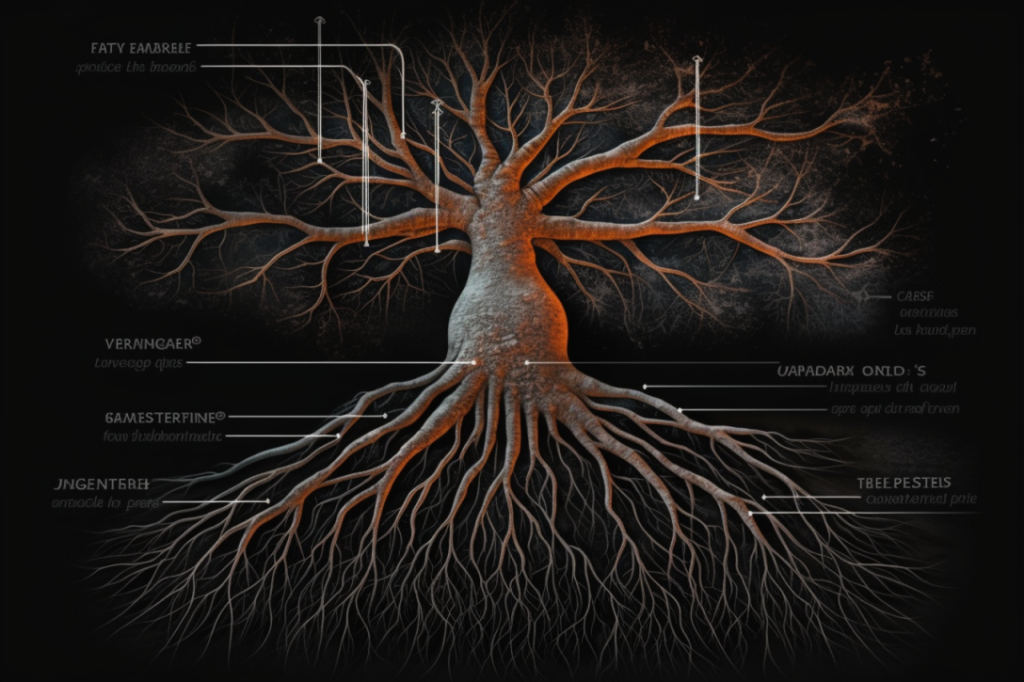A domain name is the address where your web page appears on the Internet. The domain name is also known as a URL (Uniform Resource Locator). For example, google.com is the domain name of Google. If you want to create a new site or blog, you’ll need to purchase a domain name from a company called a registrar.
Domain names can end in .com, .net, or a myriad of other endings. These endings of a domain name are referred to as extensions of the top level domain (.tld) system.
The domain name of your website is known to the public as your website’s branding identity. For another example, iloveseo.com is the domain name of iloveseo.
As the public-facing name of your company’s website, it is one of the most, if not the most, important decision that you can make regarding your business.
The better your domain name, the better your public recognition, your marketing, and your overall market reach because of its overall market appeal.
What Is a Domain Name?
A domain name is a string that maps to a numerical Internet Protocol (IP) address, used to route traffic over the internet. The domain name system (DNS) translates a domain name into an IP address. When you type a domain name into your browser, it sends a request to a server called a DNS resolver, asking what number corresponds to the domain name you typed. The DNS resolver looks up the information in a database and returns the corresponding IP address.
In addition to translating domain names into numbers, DNS servers provide many other functions, including caching and distributing data across networks.
For example, if you have a website at www.example.com, then the subdomains are:
www.example.com
mail.example.com
ftp.example.com
The first two are top-level domains (TLDs), while ftp.example.com is a second-level domain (SLD). A TLD is a set of all possible domain names that can be registered with a particular organization or company. For example, .com is the TLD for commercial websites, .edu is the TLD for educational institutions, and so on. An SLD is a specific domain within a TLD. In this case, the SLD is ftp.example. This means that any site under the example.com domain has the same structure as www.example.com. If you want to access www.example.com from another computer (while it is not live or accessible from the domain name), you must use its IP address ##.###.###.##. If you want to access any particular subdomain on that domain when it’s not live, you will have to use some variation of the IP address in order to access it, rather than the domain name.
Only after you have switched everything live can you fully access everything on a particular domain name without needing to know the IP address.
Who Manages Domain Names?
Domain names are all managed by registries, which delegate domain name registration to registrars. Registrars manage domain names for clients, while domain name resellers buy domains from registrars and sell them to customers. Registrars are responsible for managing the DNS records associated with each domain name. In addition, some registrars offer additional features such as web hosting, email accounts, and SSL certificates.
What Is a Domain Name Extension?
A domain name extension is a part of a domain name that describes the purpose of the domain. You can add extensions to a domain name to make it easier to remember or to describe the content of the domain. But, only certain domain name extensions are valid, and these are available in a list on any reputable domain name registrar’s website.
What’s the Difference Between a Domain Name and a URL?
A Uniform Resource Locator (URL) is a string of text used to identify resources online. This includes everything from the domain name you type into your browser to the path to a file on a server. In short, it’s how we access the internet.
For example, if you want to go to a certain page on cloudflare.com, you might enter the URL ‘https:/www.cloudflare.com/?utm_sourceblog&utm_mediumpost&utm_campaignwhat%20is%20a%20domain%20name%20and%20url’. If you wanted to read about learning, you could use the URL ‘https: // www.cloudflare. com / learning /’.
The most important part of a URL are the parts inside the forward slashes (/). These tell the browser what to do next. There are several different types of URLs, each one serving a particular purpose. Let’s take a look at some common ones.
How Are Domain Names Configured?
As you might have guessed, there are many different parts to a domain name. They include things like the subdomain, their CNAME record, A records, @ records, and so on. All of these records provide information on where a domain name needs to route certain services. From email, to specific IP addresses, and so on. Any errors in the configuration of these records can cause significant issues for your website down the line.
What Is a subdomain?
A subdomain is a section of a website that lives on a separate domain name. Subdomains allow you to create multiple versions of a single website. For example, you could have a blog version of your website living on a subdomain called blog.yourwebsite.com. Then you could also have a mobile version of your website living in a subdomain called m.yourwebsite.com.
What Is a CNAME record?
CNAME stands for Canonical Name. It tells the browser where to find the actual address of a resource. The CNAME record allows you to point a domain name to another domain name.
What Is an MX record?
An MX record is used to define the mail servers for a domain. An MX record points to the IP addresses of the mail servers responsible for sending and receiving emails for a domain.
What Is an A record?
An A record is used to define an alias for a hostname. When you set up a DNS entry, you need to specify both the hostname and the IP address. However, sometimes you only know the hostname. To solve this problem, you can use an A record instead of specifying the IP address directly.
What Is a PTR record?
PTR stands for Pointer. It is used to map a hostname to its IP address.
What Is a TXT record?
TXT records are used to store information about a domain. They are often used to store contact details like phone numbers or mailing addresses.
How Does a DNS work?
DNS works by translating human-readable names into machine-readable data. DNS translates a web address into an IP address. This process is known as resolving. Resolving happens when you type a web address into your browser. Your computer uses the DNS to translate the web address into an IP Address.
What Are The Different Parts of a Domain Name?
A domain name consists of several components. Each component has a meaning and purpose within the whole. Here we’ll take a closer look at the different parts of a domain name.
The most important part of a domain name is the Top Level Domain (TLD), which determines what type of site you’re looking at. There are four main types of TLDs: .COM, .NET, .ORG and .EDU.
Generic TLDs
These are the most common TLDs. They represent generic domains, such as “example.com”, “hotels.co.uk”, and “facebook.com”. Generic TLDs are used for many sites, including big companies and organizations, government agencies, educational institutions, and social media platforms.
Country TLDs
Most countries have their own TLDs, which allow people to reach out to businesses located in those areas. For example, “.ca” represents Canada, while “.de” stands for Germany. Country TLDs are very useful for finding information about local businesses and getting directions.
Organization TLDs
Some websites belong to specific groups. These websites may be owned by a company, organization, or group of individuals. Organization TLDs help visitors identify these kinds of websites. For example, “.org” is the official top level domain for non-profit organizations.
City TLDs
City TLDs are similar to country TLDs, but they focus on cities rather than entire countries. For example, “.london” is the city TLD for London, England.
Geographic TLDs
Geographic TLD’s are designed to make it easy to locate websites based on location. For example, “.au” is the Australian TLD.
Domain Names vs Hostnames
When you visit a website, your computer needs to know how to connect with that website. The first step in connecting to a website is called resolving. Resolving means converting a website address into an IP address, so that your computer knows where to send requests.
That string of characters is called a URL. URLs are made up of two parts: a protocol and a domain name. A protocol tells your computer what kind of request you want to make. In this case, the HTTP protocol is being used.
The second part of the URL is the domain name. The domain name is usually written in lowercase letters. You can think of the domain name as the street address of a website.
You can also use special characters instead of numbers to create more complex URLs. But, these special characters are usually limited to the last part of URL, rather than being in the domain name itself.
Why Do I Need a Domain Name?
The most common reason for choosing a domain name for your site is because it needs one. If you’re building a brand-new website, there’s no way around it. You’ll need a domain name that matches the URL you want visitors to type into their browsers. However, there are many other reasons too. Let’s take a look at some of them.
- A memorable URL.
- Your brand.
- Search Engine Optimization (SEO).
- Domain Privacy.
- Personal preference.
- Web hosting.
- Business purposes.
- Marketing.
- Security.
- SEO.
- Social Media.
- Email marketing.
- Reputation management.
- Website security.
- Customer service.
- Ecommerce.
- Content delivery networks (CDN).
- Mobile app development.
Clearly, there are many reasons for somebody to purchase a domain name. It all depends on how savvy they are about their business and how far they want to go with that domain.
Getting a Domain Name
You can purchase a domain name directly from a domain name company called a domain name registrar, such as GoDaddy, Namecheap, or Register.com. If you want to use a different domain name registrar than the one you purchased your domain name from, you will have to transfer the domain name from the current registrar to a different registrar.
To find out whether there are any restrictions on the domain names you wish to register, check the terms and conditions of the domain name registrar. For example, some registrars offer extremely cheap domains, while others charge a more expensive fee. Some allow certain extensions, while others do not. Also, some require a credit card number, while others accept payment via PayPal or Amazon Payments.
Once you know what type of domain name you want to register, contact the domain name registrar and ask about fees and restrictions. Once you decide on a price, make sure you read the fine print carefully. A lot of people think they’re getting a good deal because it costs less than $10, but if you don’t understand the contract fully, you could end up paying thousands of dollars for that domain name. Make sure that you know what the contract says before signing it.
In most cases, you’ll pay a one-time setup fee. After you’ve paid for the initial cost, you’ll usually receive a confirmation email with instructions on how to log into your account.
If you already have a domain name that you’d like to move, you may want to transfer your domain name to another registrar. In which case, with GoDaddy, the minimum wait period is seven days at the time of this writing.
Domain Name FAQ
Domain names are used to identify Internet addresses to computers. They are similar to phone numbers, except you don’t have to memorize them. You can use a domain name just like a street address; it lets people know where to find what you’re talking about online.
A domain name is simply an alphanumeric string that identifies a server somewhere on the Web. For example, one way to think about it is like having a unique email address. Your username@example.com is different from myusername@example.com. Also, the example.com part of the email address mentioned above would be the domain name.
You’ll need to register your domain name before someone else does. If someone already registered your desired domain name, you could end up paying a lot of money for something you didn’t want in the first place. But once you’ve got a domain name, you can make it yours forever- so long as you keep paying the registration costs of that domain.
The most important thing to understand about domains is that there are lots of different types of domain name extensions. There are .com, .org, .net, .info, .biz, .us, and many others. Each type of domain name extension has different rules about how it must be written.
There are three main parts to every domain name:
- The TLD (top level domain), which tells you what kind of site it is. This includes .com, .edu, .gov, .mil, and many others.
- The second part is the subdomain, which is the specific website within the larger domain. For example, if you own a business called “Example,” then your domain name might look like this: www.example.com.
- The third part is the hostname, which is the actual web page itself. So if you wanted to create a blog at www.example.com/blog/, your hostname might be ns.example.com (where “ns” is the domain name servers where the site is stored).
Use a qualified professional to make sure that your domain name is properly set up, and that you don’t have any issues that might impact the access of your website by Google or other users later.
What Is the Difference Between a Domain and a Domain Name?
They are really the same thing. When someone says “domain” when referring to the web, they are usually referring to a “domain name” as well. This might seem a little obvious to some people, but you would be surprised about how many people actually don’t know internet terminology and how things on the internet work at their most basic levels.
What Is the Difference Between a Domain Name and a Website?
A domain name is the address or URL of a website, while a website is a collection or set of related webpages. When you type www.example.com into your browser, you are accessing example.com, the website hosted there. You are also typing in the domain name. This is called a subdomain. Subdomains typically contain information about the organization that owns the site, such as contact information, or whether the site offers products or services.
The term “website” is generally used interchangeably with “webpage,” which refers to a file stored on a server. Websites are often associated with a domain name, like www.example.com. However, a webpage can exist without a corresponding domain name, as long as it exists on a publicly accessible computer. Websites are usually accessed via a web browser, which automatically adds the appropriate domain name to the beginning of the URL. For instance, if you want to access the home page of example.com, you would type www.example.com into your web browser.
How Do I Check Who the Owner of a Domain Name Is?
You can check who the owner of a domain name is by using a whois domain name lookup service such as whois.com. This whois service will allow you to look up a variety of pieces of information about who owns the domain. This service is usually free, and you can find out things like the domain name’s IP address, the information about who owns it, the server it’s hosted on, what domain name servers it uses, and more useful information. Keep in mind, however, that some domain names have domain privacy enabled, which is a feature that allows owners to hide who actually owns a domain name from prying eyes.
Domain Names Are Important, and Could Mean the Difference Between Success and Failure
There’s no mistake about it: your site’s domain name is important. This could mean the difference between the success and failure of your project.
By making sure that your site’s domain name matches the public voice of your company, you can ensure that your domain name can be the best representation of your brand there is.
And there is no greater marketing tool than a great domain name.
A great domain name that’s easy to say, easy to read, easy to type, and easy to interact with can all be driving factors towards a website’s success.
When do you plan on registering your next domain name?









